Delaloye, his own ‘tractor’
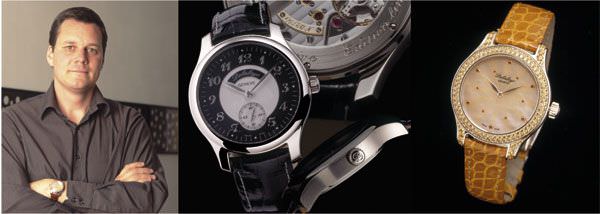
Born in Geneva in 1970, Nicolas Delaloye decided to launch his own brand in 2003. In just a few years, this young watchmaker, who was trained at the Watch School in Geneva, acquired quite a bit of decisive experience. After having worked in Patek Philippe’s atelier for grande complications, then later in the venerable Geneva brand’s restoration workshops repairing exceptional antique pieces, followed by a period working alongside Roger Dubuis and François-Paul Journe, Nicolas Delaloye began creating the first complicated pieces (tourbillons, minute repeaters, flyback chronographs) for Cédric Johner. In 2002, however, Delaloye made the move towards independence, producing pieces for various large brands in Switzerland.
As a ‘pure’ watchmaker, he could not conceive of creating his own brand unless his watches were equipped with his own movements. Three years were necessary to arrive at this juncture: two years of ‘theory’ and conceptualization, followed by one year of fabrication to present his first mechanical movement in the spring of 2006. Designed as a simple base (hours, minutes, seconds), and ultra-reliable, this manual winding mechanical movement features a 72-hour power reserve, 18,000 vibrations per hour, and is, in his own words, “an excellent tractor.” Its architecture, in the grand tradition of the art of timekeeping, with its large bridges, its jewelled settings held in place by three screws, was designed to not only later accept additional mechanisms (he is already working with a perpetual calendar), but also to offer large spaces for decoration.
He made the first five test pieces nearly entirely by hand (with the exception of the gears), giving them a lovely hand finish (chamfering, sinks, Côtes de Genève pattern). Encouraged by the result, he started the first dozen of a ‘series’ of pieces, with a very classic round case, itself very pure and simple. He was moving down the road to BaselWorld. There, a person was quite interested and acquired several of his pieces. Delaloye was reassured: his very ‘watchmaking’ approach seemed to be appreciated. He knew he was on his way.
Welcomed this year at BaselWorld 2007, on the stand of the Horological Academy of Independent Creators (we cannot say enough about the decisive role this association has played in encouraging new talents and exploring new avenues of timekeeping), he will present his latest creations, including a ladies’ line, the very charming ‘Les Pléiades’. In spite of all this, Nicolas Delaloye is still perfectly conscious of the many stumbling blocks that may await the young brand. He is determined, however, to proceed slowly, not skipping any steps, while remaining very artisanal and financially independent.
McGonigle, an Irish tourbillon
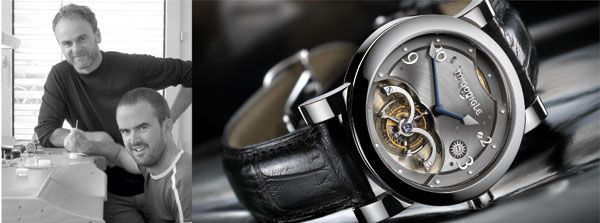
Who would have thought that one of the loveliest tourbillons of the year would be from Ireland? Yet, this is the case with a splendid piece proudly engraved with the term, ‘Made in Ireland’, that is the brainchild of two brothers, John and Stephen McGonigle. Both of these men ‘fell’ into watchmaking at an early age and, after having followed courses at the Irish Institute of Horology in Dublin, they moved to Switzerland to perfect their skills. John went to Wostep, then to Audemars Piguet, followed by a time with Christophe Claret before returning home to Ireland. Stephen, after having worked in antique watch restoration in London, joined his brother at Christophe Claret, followed by stints at Franck Müller, Breguet, and British Masters before setting up shop as an independent watchmaker in Neuchâtel.
So, between Ireland and Switzerland, the two men made their first watch together – a beautiful tourbillon crafted in platinum, and entirely designed and executed by themselves. Manual winding, with a power reserve of 110 hours, the McGonigle timepiece, beyond its splendid architecture and its Celtic decorations, is quite interesting from a watchmaking point of view. Having chosen to forgo a regulator for adjusting the piece’s precision, they had to be extra careful in establishing the equilibrium between the weight of the balance and the length of its spring. Thinking logically, they streamlined the carriage, thus improving its efficiency while giving it an appearance of extreme lightness. The dial was worked on three levels, with two openings cut in the sapphire crystal: one at 6 o’clock which reveals the tourbillon, and one at 12 o’clock, which shows the gearing of the barrel. On the second level, the bridge of the barrel has been treated with ruthenium, as on the lower level, thus obtaining both a high degree of readability (blued hands and raised indices) and wonderful light on the tourbillon carriage.
The very delicately oval case is extremely expressive, with striking horns and an original large crown carved in the style of the ‘Ogham’ alphabet, the Celtic writing that is found in the McGonigle logo. Its affirmed Celtic origin is also apparent in the subtle play of the engraving on the back of the watch. The McGonigle brothers have undoubtedly set off on a wonderful adventure.
Van der Gang, from outer space to tiny space
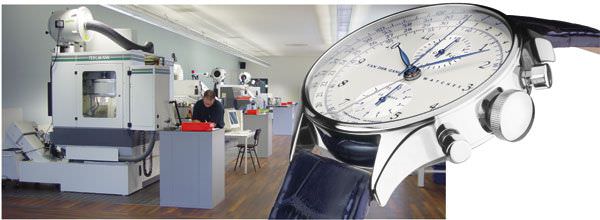
Van der Gang is illustrative of a whole new way of approaching watch production. This could not have happened in Switzerland, where watch traditions are too strong, but it did occur in the Netherlands, in the town of Dokum. In the beginning, Van der Gang was a manufacturer of high technology instruments used in the space industry and in medical equipment. But, its owner, Wybe Van der Gang, was also a lover of mechanical watches.
Why not take advantage of all the high precision machine tools to make watches, he asked himself? After all, the basic techniques are more or less the same. From this overriding passion, mixed with his definite technological capabilities, came a collection of sober, even ‘Nordic’ we could say, timekeepers with decidedly contemporary shapes. The accent was placed on precision, expressed by a dial that favours readability. Van der Gang did not try to make the movements (which are Valjoux 7751 automatic chronographs) but rather, he wanted to concentrate on making the cases and dials. With very nice workmanship, the cases are carved from special, unscratchable steel that has been hardened with nitrogen, and protected on both front and back with scratch-resistant purplish sapphire crystals. The silver treated dials are the perfect backdrop for the blued steel hands, and the black dials have rhodium plated hands.
While this is, of course, not revolutionary, it is a very convincing demonstration of a new type of savoir-faire, far from the lands of Switzerland, that has resulted in beautiful watches with perfect clarity of expression. Definitely a brand to watch.
Lang & Heyne, Saxon orthodoxy

Since A. Lange & Söhne and Glasshütte have brought the letters (and what letters they are!) of nobility to prestige Saxon watchmaking, this corner of the earth has become a refuge for the most classical and traditional types of timekeeping that ever was.
In this lineage of excellence can be placed Marco Lang, born in 1971. Since 2000, he has been at the head of the small (30 to 40 watches per year) but very excellent manufacture, Lang & Heyne. The best of Saxon timekeeping can be found in their watches, exemplified by the Calibre 1, with its highly classic architecture, large jewels with their gold settings held in place by blued screws, its careful finishing (engraving, subtle surface treatments, perfect chamfering), and its luxurious details, such as the fine engraving or the diamond set in the centre of the balance.
The Calibre I served as the basis for the very lovely Calibre III, which, thanks to an additional plate of only 1.5 mm, has been transformed into a complete calendar, with moon phase display, and the very original indication of the angle of the sun at noon on the equator (of which depend the seasons), mounted on a terrestrial cloisonné disc.
The Calibre IV is a magnificent, single-pushbutton, column-wheel (subtle device visible at the back) chronograph movement, which allows minutes and seconds to be timed with a central hand.
This attractive work of timekeeping art is visually expressed by round cases with triple horns, all in an absolute classic style mixed with a slight touch of ‘baroque’ that gives them their Saxon flamboyance. The names of the various Lang & Heyne timepieces evoke the history of Saxon royalty, with appellations such as ‘Friedrich August 1’, ‘König Johann’, ‘Moritz of Saxony’, and even ‘King Albert’.
Stepan Saparneva, the finnish spirit
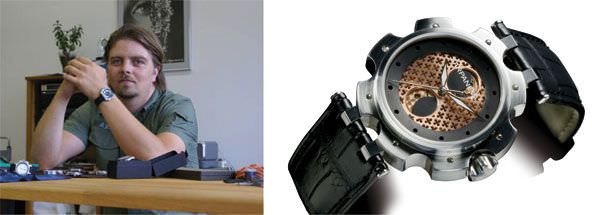
The son of the famous jewellery designer, Pentti Sarpaneva, Stepan had a penchant, at an early age, for watchmaking. After his diploma from the Finnish School of Watchmaking in Tapiola, in 1992, followed by experience in several different metiers, he left his native land for Switzerland. After attending complementary classes at Wostep, he was hired by Piaget in La Côtes-aux-Fées, where he worked for two and a half years in the after-sales service. This gave him the opportunity to work on a number of different models and to perfect his skills. From there, he spent some time again at Wostep where he attended courses in complicated timekeeping. Then, he went on to work at Parmigiani (where he met another Finnish man, who later also turned independent, Kari Voutilainen), followed by stints at Vianney Halter and finally at Christophe Claret.
Armed with his experience in high complications, Sarpaneva decided in 2003 to create his own atelier and his own brand in Finland. From then on, he worked on original models, using Swiss mechanical calibres as a base, that he reworked in his own way. His cases are extremely sculptural, powerful, and very original, showcasing his pronounced taste for the pursuit of design, characteristic of the Fin that he is.
Several models have been introduced, all different, yet all with a very strong personality: sharp lines like they were brutally carved from a mass of steel, and geometric indices. His movements are also innovative. For example, the escapement wheels are specially treated with diamond in order to reduce their friction; the oscillating weight is in the form of a turbine in the Komentaja model; the oscillating weight is also visible through the case back which has been cut out in the form of a spiral, creating a kaleidoscopic effect. But, his latest achievement, exemplary of the innovative ambitions of Stepan Sarpaneva, is a cross of two worlds, electronics and haute horlogerie to offer an experimental timepiece capable of measuring acceleration. In a way, he has invented a new function, showing that the renewal of watchmaking can also come from the Far North.
Hautlence, mechanical entrepreneurs
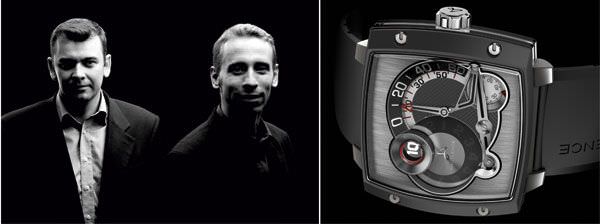
Renaud de Retz and Guillaume Tetu, the two founders of Hautlence, are emblematic of a new ‘race’ of watch entrepreneurs, coming not from the workbenches, but from the ranks of the large luxury groups. Although it all started with a bet (“why don’t we make our own brand?” the friends asked themselves one evening), their intimate understanding of the techniques of marketing has allowed them to establish the foundations of a true brand, and not just a flash in the pan.
Since they themselves are not master watchmakers, they decided to concentrate not on the creation of extraordinary complications, but rather to offer mechanical watch buffs a new way of telling time. Acting prudently, their first model, presented in 2005, allied a certain classicism of the case with a totally new way to display the time. Surfing the wave of enthusiasm for the mechanical, they emphasized the elements of transmission (such as a sort of connecting rod), creating at the same time a very poetic mechanical setting. Well received, this initial piece permitted them to build the foundations of a commercial network worthy of the name, and to continue their adventure along the same track.
The latest model, the HLS 04 and 06, goes a bit further than the original. From a visual standpoint, it is very modern, and features a contemporary case combining scratch-resistant black steel and white gold, a rubber bracelet, a three-dimensional dial with a jumping hand on a ‘smoked’ disc, seconds displayed on a small satined disc, and a retrograde second hand on a connecting rod. This is a splendid yet playful small mechanical device that augurs well for the future of Hautlence, a brand that won the bet to create a name, an identity and a niche like no other.
Romain Gauthier, CNC and haute horlogerie
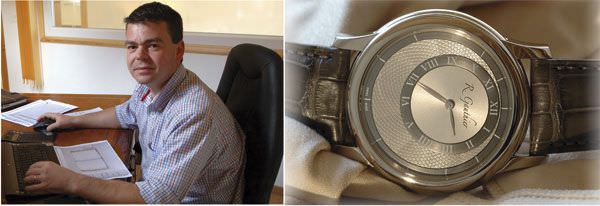
The road travelled by Romain Gauthier is also atypical, and testifies to his own particular way of making watches. Born in 1975, Romain Gauthier is, by training, a builder of precision machine tools, and a CNC programmer and operator. In 1999, while he worked for a major watch manufacturer, he began to dream of creating his own watch, and, why not?, his own movement.
Extremely patient and methodical, aware that, in addition to his technical competencies, he had to acquire business acumen, he enrolled in business school to obtain an MBA (which he did in 2002, with a final thesis devoted to none other than the ‘business plan’ of his future enterprise).
In secret, he worked on the design of his own movement, with two main characteristics: a winding crown under the case that can be activated without removing the watch, and a dial off-centred towards the top. Three years followed, three years of calculations, three years of designs. Finally, came the fabrication of all the component parts, made on a CNC machine loaned to him by a friend. At the final stages, a watchmaker came to assemble the parts and give life to the movement. Today, after all these years of labour, with friendly advice from Philippe Dufour, Romain Gauthier can finally unveil his timepieces. And beautiful they are.
His first collection, Prestige, is composed of round watches, 41 mm in diameter, made in rose or white gold, or platinum, with hand guilloché gold dials, sapphire crystal, and sapphire case back. The manual winding movement features a power reserve of 60 hours, 28,800 vibrations per hour, and an ingenious horizontal winding crown that, placed delicately under the case, can be activated by the wearer. With very lovely architecture and perfect finishing, this movement comprises a balance with four inertia screws and an adjustment indicator. The unique gears have been directly made from a solid piece of metal rather than stamped. Each watch is individually hand assembled and signed by the attending watchmaker. There can be no doubt, this brand has started well on its long journey.
Source: Europa Star February-March 2007 Magazine Issue





